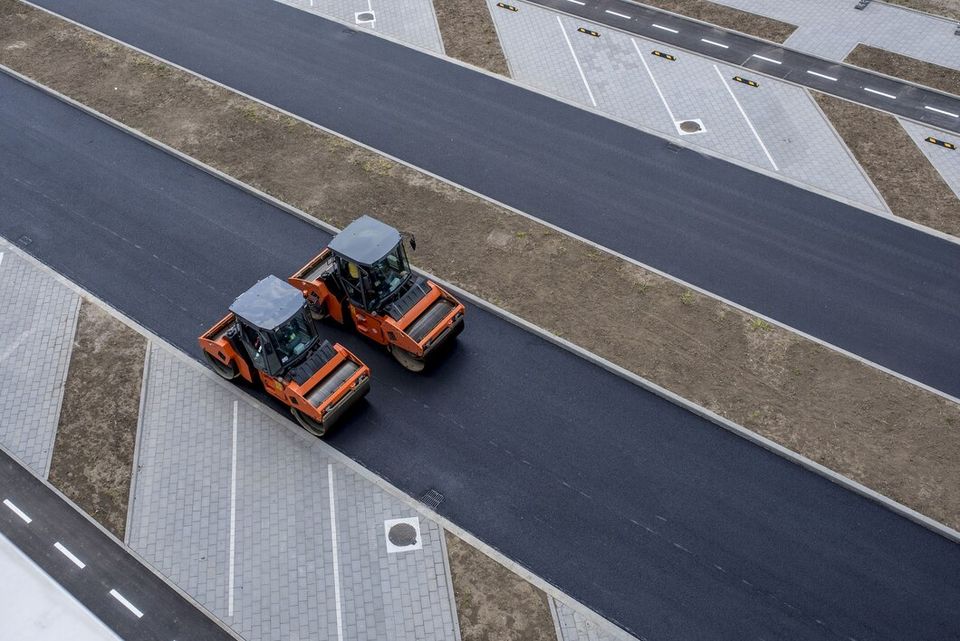Road maintenance and rehabilitation are crucial for ensuring safe, efficient, and reliable transportation infrastructure. With the growing emphasis on sustainability and cost-effectiveness, asphalt pulverizing techniques are rapidly gaining popularity in the industry. Asphalt pulverizing not only offers an environmentally friendly approach to road maintenance and rehabilitation but also provides significant cost savings compared to traditional methods.
In this article, we'll discuss the benefits of employing asphalt pulverizing techniques, highlighting their eco-friendly and cost-effective advantages. By understanding the ins and outs of asphalt pulverizing, construction professionals can make informed decisions that support long-lasting, sustainable road maintenance and rehabilitation.
Understanding Asphalt PulverizingAsphalt pulverizing is a road rehabilitation technique that involves mechanically grinding and milling existing asphalt pavement layers to create a uniformly crushed material. This crushed material can then be used as a new base layer for paving or left in place for road maintenance purposes. Asphalt pulverizing offers a cost-effective and sustainable solution for maintaining and rehabilitating roadways as it eliminates the need for completely removing and replacing existing pavement materials.
Benefits of Asphalt Pulverizing1. Cost-Effective Road Maintenance and RehabilitationAsphalt pulverizing can lead to significant cost savings compared to traditional road maintenance and rehabilitation techniques, such as full-depth reclamation or complete pavement replacement. By reusing existing asphalt pavement materials and reducing the need for new aggregate and binder, asphalt pulverizing minimizes the cost of repairs while maintaining road quality and durability.
2. Time-Saving Construction ProcessAsphalt pulverizing is a faster alternative to traditional road rehabilitation methods, as it eliminates the need for extensive excavation, transportation, and disposal of existing pavement materials. By streamlining the road maintenance and rehabilitation process, asphalt pulverizing shortens project timelines and minimizes disruptions to traffic flow.
3. Environmentally Friendly ApproachAsphalt pulverizing is an environmentally friendly solution for road maintenance and rehabilitation. It promotes the recycling of existing pavement materials and reduces the demand for new resources. The process minimizes the need for aggregate mining, energy-intensive asphalt manufacturing, and the transport and disposal of old pavement materials, reducing the overall carbon footprint of road projects.
4. Improved Material Properties and PerformanceAsphalt pulverizing can enhance the properties and performance of existing pavement materials by creating a more uniform and well-graded aggregate base. This process enables better compaction and densification of the material, resulting in improved load-bearing capacity, resistance to moisture infiltration, and overall structural performance.
Asphalt Pulverizing Techniques and Equipment1. Cold MillingCold milling is the process of removing the upper layers of asphalt pavement using a specialized machine called a milling machine or cold planer. These machines use rotating cutting drums to grind and remove the pavement surface, creating a granular, crushed material.
2. Full-Depth PulverizationFull-depth pulverization involves the pulverizing of both the asphalt layer and the underlying base material, creating a uniform blend of pulverized material. This process is typically carried out using large self-propelled machines, like road reclaimers or rotomills, equipped with powerful cutting drums and adjustable depth controls.
3. Modified In-Place PulverizationModified in-place pulverization is a technique that combines the benefits of both cold milling and full-depth pulverization. In this method, the top asphalt layer is milled, followed by full-depth pulverization of the underlying base material. The milled asphalt is then either mixed back into the pulverized base or used as a separate paving layer on top of the pulverized material.
Key Considerations for Successful Asphalt Pulverizing1. Project Scale and Site ConditionsThe scale and conditions of the road maintenance or rehabilitation project play a critical role in determining the feasibility and effectiveness of asphalt pulverizing. Factors such as road width, pavement thickness, existing pavement condition, and underlying base materials should be considered when planning an asphalt pulverizing project.
2. Equipment SelectionChoosing the appropriate equipment for asphalt pulverizing is crucial for achieving the desired results. Factors like equipment size, horsepower, cutting drum configuration, and depth control capabilities should be considered based on the specific project requirements and site conditions.
3. Quality Control MeasuresThe success of asphalt pulverizing depends on maintaining strict quality control during the process. Monitoring factors such as pulverized material gradation, moisture content, and compaction levels during and after the pulverizing process can help ensure the desired results are achieved.
4. Proper Planning and CoordinationSuccessful asphalt pulverizing projects require proper planning and coordination to minimize disruptions to traffic and adjacent properties. Timing and phasing of work, traffic management plans, and effective communication with stakeholders are essential components of successful pulverizing projects.
Asphalt pulverizing offers a sustainable and cost-effective solution for road maintenance and rehabilitation, providing numerous benefits, including reduced project costs, shorter construction timelines, and a smaller environmental footprint. By understanding the techniques and considerations involved in asphalt pulverizing, construction professionals can make informed decisions and implement these techniques for the success and longevity of their road projects.
Pave the Way to Sustainable Road Maintenance with Terra-Firma Stabilization & ReclamationAsphalt pulverizing offers an efficient, cost-effective, and environmentally friendly solution for road maintenance and rehabilitation. Embracing this technique can lead to numerous benefits for your project, including reduced costs, shorter construction timelines, and a smaller environmental footprint.
At Terra-Firma Stabilization & Reclamation, we pride ourselves on providing cutting-edge soil management solutions and road maintenance services, including asphalt pulverizing. Our team of highly qualified professionals is equipped with the knowledge, experience, and state-of-the-art equipment necessary to deliver exceptional results, ensuring the success and longevity of your road projects.
Don't let outdated road maintenance and rehabilitation methods hold you back – choose Terra-Firma Stabilization & Reclamation as your
soil stabilization contractors in creating sustainable, efficient, and long-lasting road infrastructure. Contact us today to learn more about our wide range of services and solutions, including asphalt pulverizing, designed to meet your project's unique needs. Let Terra-Firma Stabilization & Reclamation guide you on your journey towards a more sustainable and efficient approach to road maintenance, and pave the way to long-lasting, eco-friendly road infrastructure.

